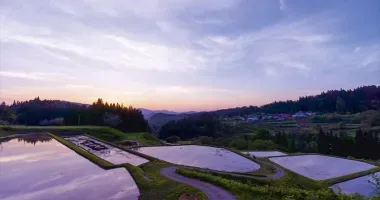Itoigawa Guide: Discovering the geological wonders and cultural treasures
- Published on : 21/03/2024
- by : Japan Experience
- Youtube
Nestled in the far west of Niigata Prefecture, Itoigawa is a captivating city where the Northern Japan Alps meet the Sea of Japan. This unique geological marvel sits at the edge of the Fossa Magna, a massive fault line dividing Japan into East and West sections. Itoigawa's rich geological heritage earned it the distinction of becoming the first member of the Japanese Geoparks Network and a part of the Global Geoparks Network. With its stunning landscapes, ancient jade culture, and delicious local cuisine, Itoigawa offers visitors a truly unforgettable experience. From exploring hidden gorges to savoring fresh seafood, this guide will take you on a journey through the wonders of Itoigawa.
Exploring Itoigawa's unique geological heritage
Itoigawa's geological significance is immediately apparent upon arrival. The Fossa Magna, or "Great Ditch," is a fault line between the Eurasian and North American continental plates that stretches from the Sea of Japan to the Pacific Ocean. This geological feature is the cornerstone of Itoigawa's unique landscape, with rocks younger than those in the rest of the Japanese archipelago, formed from an ancient coral sea thrust upward millions of years ago.
At the heart of Itoigawa's geological attractions is the Fossa Magna Museum, serving as the Information Center of the Itoigawa UNESCO Global Geopark. Here, visitors can delve into the area's geological history and understand its global significance. The museum showcases a stunning collection of Itoigawa Jade, along with unusual minerals and fossils from around the world.
Another must-visit site is the Kotakigawa Jade Gorge, Japan's largest source of jade. This limestone gorge, hidden in the upper reaches of the Kotaki River at the base of Mt. Myojo, features massive jade boulders that have rested in the riverbed for millennia. Since 1956, it has been preserved as a National Natural Monument of Japan.
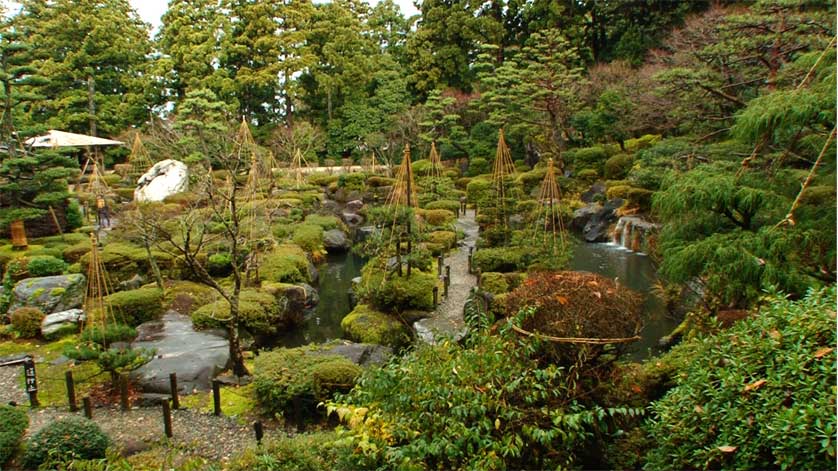
Hisui-en Garden, Itoigawa, Niigata Prefecture
Experiencing the local cuisine: Rice, sake, and seafood delicacies
Itoigawa's unique geography and climate contribute to its rich culinary traditions. The area is renowned for its high-quality rice, which forms the basis of its excellent sake. Five local sake breweries produce distinctive varieties that reflect the region's terroir.
The city's coastal location ensures a bounty of fresh seafood. Crab is particularly prominent, with the Benizuwai (red snow) crab being a local delicacy. At Marine Dream Nou, a highway rest stop, visitors can enjoy a variety of seafood dishes, including crab prepared in various ways.
For a unique local experience, try Sasazushi, a rustic dish of vinegar rice topped with pickled vegetables and local produce, served on a bamboo leaf. This dish holds a special place in the hearts of Itoigawa's residents and offers a taste of the region's culinary heritage.
Outdoor adventures: Hiking trails and natural attractions
Itoigawa's diverse landscape, ranging from sea level to mountain peaks, provides ample opportunities for outdoor enthusiasts. The area boasts numerous hiking trails catering to all skill levels, from leisurely walks to challenging mountain climbs.
One popular destination is Mt. Myojo, standing at 1,188 meters tall. Formed from ancient coral reefs, its 450-meter limestone rock face is a favorite among rock climbers. The nearby Takanami-no-ike Pond offers beautiful views and is steeped in local legend.
For those seeking a more challenging hike, the Tsugami Shindo trail starts at sea level on the Itoigawa coastline and leads up into Japan's Northern Alps. This vertical hiking trail offers breathtaking views and a unique experience of ascending from sea to summit.
Cyclists can enjoy the Kubiki Cycling Road, a 32-kilometer path built on the old Hokuriku Railroad. This scenic route offers frequent glimpses of the Sea of Japan and passes through picturesque red brick tunnels.
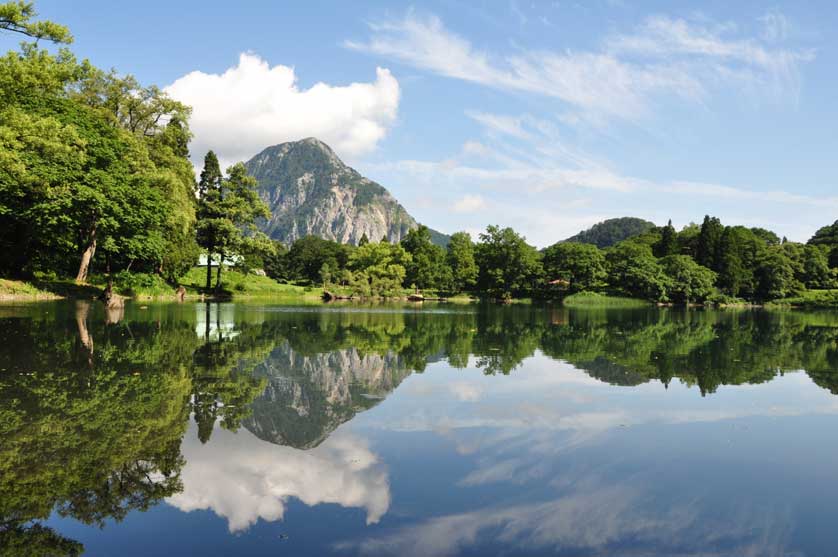
Takaname-no-ike Pond, Niigata
Immersing in Itoigawa's cultural landmarks and museums
Itoigawa's rich history and culture are showcased in its various museums and cultural sites. The Chojagahara Archaeological Museum offers insights into the ancient Jomon people who lived in the area and developed the world's oldest jade-working culture.
Art enthusiasts should visit the Tanimura Art Museum, which houses ten exquisite wooden Buddha images carved by master sculptor Seiko Sawada. The museum building itself, designed by renowned architect Togo Murano, is a work of art.
For a glimpse into Itoigawa's railway history, visit the Itoigawa Geostation Geopal at Itoigawa Station. This free train museum features an original KiHa 52 diesel train and interesting model railways representing the area's mountainous terrain.
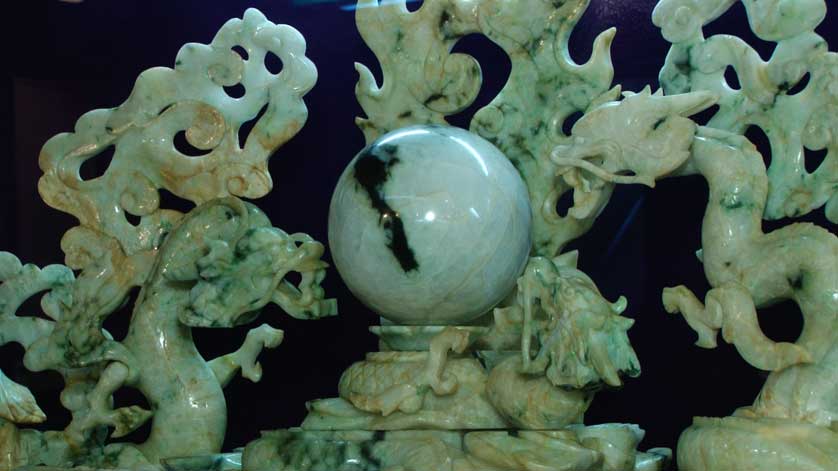
Jade Art, Hisui-en Garden, Itoigawa, Niigata Prefecture
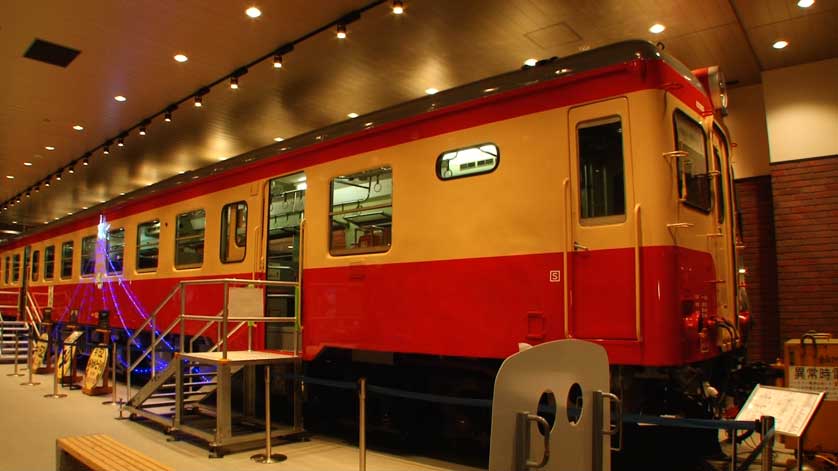
KiHa 52 diesel train at Itoigawa Geostation Geopal, Itoigawa Station, Niigata Prefecture
Relaxation and rejuvenation: Onsen experiences in Itoigawa
After a day of exploration, visitors can unwind in one of Itoigawa's relaxing hot springs. Renge Onsen, located at an elevation of 1,475 meters, offers outdoor baths with spectacular views of the surrounding peaks. Here, hot water bubbles to the surface accompanied by billowing clouds of steam, creating a truly magical atmosphere.
Another notable onsen is Sasakura Onsen, Itoigawa's oldest hot spring resort with a history dating back over 300 years. Set against the backdrop of forested mountains, it offers various baths, including a sodium bicarbonate spring known for its skin-beautifying properties.
For those staying in the city center, Itoigawa Onsen at the Hotel Kunitomi Annex provides a convenient option to experience the therapeutic benefits of the local hot springs.
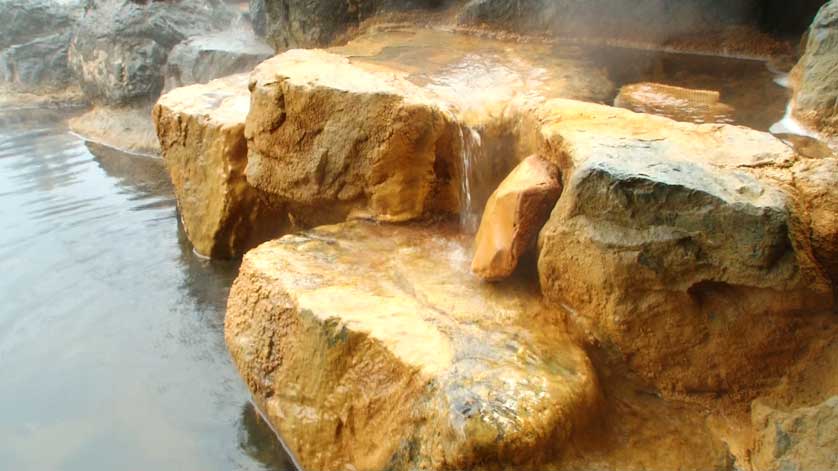
Itoigawa Onsen at the Hotel Kunitomi Annex, Niigata Prefecture
Getting around Itoigawa: Transportation tips and recommendations
Itoigawa is easily accessible thanks to the Hokuriku Shinkansen. The journey from Tokyo Station to Itoigawa takes just over two hours on the Hakutaka express train. Once in Itoigawa, visitors have several options for exploring the area:
- Train: The scenic Oito Line connects Itoigawa to Matsumoto, offering beautiful views of the Himekawa Gorge.
- Bus: Local bus services, including the Town Loop Bus, provide access to many of Itoigawa's attractions.
- Bicycle: Rental bikes are available at Itoigawa Station, perfect for exploring the Kubiki Cycling Road.
- Car: Renting a car offers the most flexibility for visiting remote areas and attractions.
For a unique experience, consider using the Ekikara Kantakun Sightseeing Taxi Service, which offers discounted taxi tours of the Itoigawa UNESCO Global Geopark.
Planning your visit: Best times to go and practical information
Itoigawa can be enjoyed year-round, with each season offering its own charm. Spring and autumn are particularly beautiful, with cherry blossoms and fall foliage enhancing the already stunning landscapes. Summer is ideal for hiking and outdoor activities, while winter offers opportunities for snow sports and enjoying the onsen in a picturesque snowy setting.
When planning your visit, consider the following tips:
- Book accommodation in advance, especially during peak seasons.
- Check the opening hours of museums and attractions, as some may have limited hours or closures on certain days.
- If planning to hike, ensure you have appropriate gear and check weather conditions.
- Try to time your visit with local events, such as the Nou Seaside Fireworks Festival at Benten-iwa Rock.
Whether you're a geology enthusiast, nature lover, or cultural explorer, Itoigawa offers a wealth of experiences. From its unique geological features to its rich cultural heritage and delicious cuisine, this city at the edge of the Fossa Magna promises an unforgettable journey through one of Japan's most fascinating landscapes.





